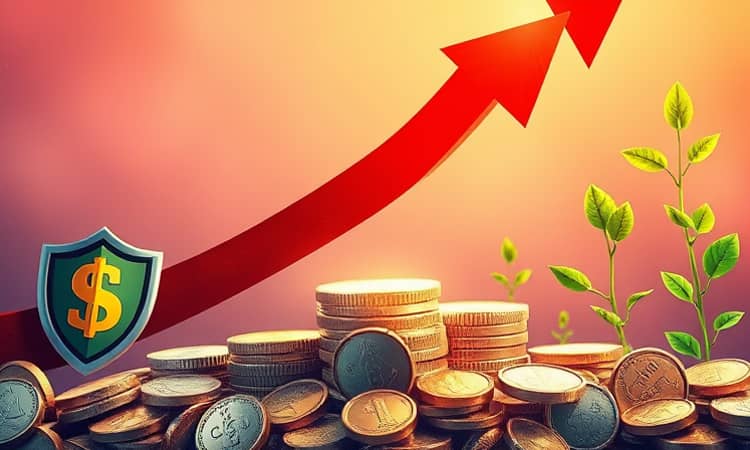Inflation is often called a silent tax on your money, gradually diminishing what you can purchase with your saved funds. Understanding this phenomenon is essential to maintaining and growing your financial future.
Without a proactive plan, each dollar can lose its real value, leaving you worse off than you expected. The key lies in recognizing inflation’s mechanisms and deploying strategies to preserve your purchasing power.
What Is Inflation and Why It Matters
At its core, inflation measures the general level of prices for goods and services increasing over time. This process means that what cost one dollar yesterday might require two dollars tomorrow.
When price levels climb, the erosion of your purchasing power becomes evident: everyday essentials like groceries, fuel, and housing become more expensive, and your savings buy less.
Governments track inflation using indices like the Consumer Price Index, which monitors price changes for a basket of goods and services over time. Core inflation, excluding volatile items such as food and energy, offers additional insight into underlying trends.
Practical examples bring inflation to life: a carton of eggs rising from $3 to $5.50 over two years highlights how everyday purchases can feel the squeeze when prices climb faster than incomes.
The Hidden Cost: Erosion Over Time
Even when your nominal bank balance grows thanks to interest, if that growth lags behind inflation, you experience a substantial loss of purchasing power. For example, earning 1% interest on savings while inflation runs at 3% equates to a 2% net loss in real value each year.
Historically, the United States saw the “Great Inflation” era spike above 14%, demonstrating how unchecked inflation can devastate savings. More recently, from October 2023 to October 2024, inflation averaged around 2.6%, still eroding real returns.
Over decades, the compounding effect over several years can erode the real value of idle cash, making retirement goals feel increasingly out of reach without intervention.
In the UK, savers earning 0.5% interest on £1,000 receive £1,005 after one year. However, with inflation at 7%, they would need £1,070 to preserve the same purchasing power—a hidden loss of £65 that few account for.
Strategies to Protect and Grow Your Savings
Fortifying your savings against inflation requires a diversified approach. By blending protected securities, higher-yield accounts, and growth assets, you can stay ahead of rising costs.
- choose higher-yield savings vehicles: High-yield savings accounts, money market funds, and certificates of deposit (CDs) can narrow the gap between interest and inflation.
- diversify investments across multiple asset classes: Equities, exchange-traded funds (ETFs), and mutual funds have historically outpaced inflation over the long term.
- government-backed inflation-protected securities such as TIPS and I Bonds adjust principal with the Consumer Price Index, providing built-in protection against price increases.
Implementing a mix of these tools aligns returns with rising costs and spreads risk across different market environments.
For government securities, TIPS adjust principal based on CPI measurements twice a year, while I Bonds combine a fixed rate with a semi-annual inflation rate, currently offering a 3.11% yield, making them attractive for risk-averse investors.
Balancing Risk and Reward
Every financial decision involves trade-offs. Higher returns often come with greater volatility, while guaranteed products may yield less than inflation. To find the optimal path, continuously re-evaluate your financial strategy in light of changing market conditions and personal goals.
Consider your time horizon: short-term needs require stability, but long-term objectives can absorb market fluctuations for potentially higher gains.
Your personal risk tolerance, time horizon, and financial goals shape the ideal mix of high-yield accounts, equities, and bonds. Younger investors may tilt toward stocks, while those nearing retirement might prioritize capital preservation.
Adapting Your Budget and Behavior
Inflation affects not only investments but also day-to-day expenses. On a tight budget, price increases can push essentials out of reach. Adopting disciplined spending habits, such as meal planning, energy conservation, and periodic expense audits, helps stretch each dollar further.
Recognize the opportunity cost of idle cash and redirect excess funds into vehicles that offer better protection against rising prices.
Tracking expenses and negotiating recurring bills, such as insurance or streaming subscriptions, can free up additional funds to direct into growth-oriented accounts or securities.
Taking Action: Building an Inflation-Resilient Plan
Begin by assessing your current savings mix. Identify accounts earning below inflation and explore alternatives that can close the gap. Regularly review your plan—economic cycles, interest rates, and personal circumstances change, so your strategy must adapt.
Working with a financial advisor or using reputable online tools can provide personalized insights, but basic steps—such as rebalancing portfolios and laddering CDs—are within every saver’s reach.
Document your progress annually, noting how adjusted interest rates, market returns, and inflation shifts affect your portfolio’s real value. Over time, these records become a roadmap that informs smarter financial choices.
Conclusion
Inflation is an unavoidable force, but it need not undermine your financial security. By understanding how rising prices erode savings and embracing a proactive, diversified approach, you can safeguard your purchasing power and pursue your long-term goals with confidence.
Start today by evaluating your current savings vehicles, exploring inflation-protected products, and adjusting your budget. With the right strategy, you can turn inflation from an adversary into a navigable challenge.
By combining knowledge, discipline, and the right financial tools, you can transform inflation from an eroder of wealth into a catalyst for smarter saving and investing habits.
References
- https://www.pnc.com/insights/personal-finance/save/how-does-inflation-affect-savings.html
- https://www.investopedia.com/articles/investing/090715/how-inflation-affects-your-cash-savings.asp
- https://www.westernsouthern.com/investments/the-impact-of-inflation-on-your-savings-and-investments
- https://www.moneyhelper.org.uk/en/savings/how-to-save/inflation-what-the-saver-needs-to-know
- https://knowledge.anbtx.com/money-management/saving/article/protecting-your-savings-from-inflation
- https://www.synchrony.com/blog/bank/how-to-combat-inflation-with-savings
- https://www.bankhillsboro.com/understanding-the-impact-of-inflation-on-your-savings/
- https://www.standardlife.co.uk/articles/article-page/savings-and-inflation














